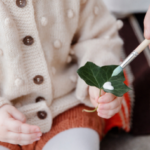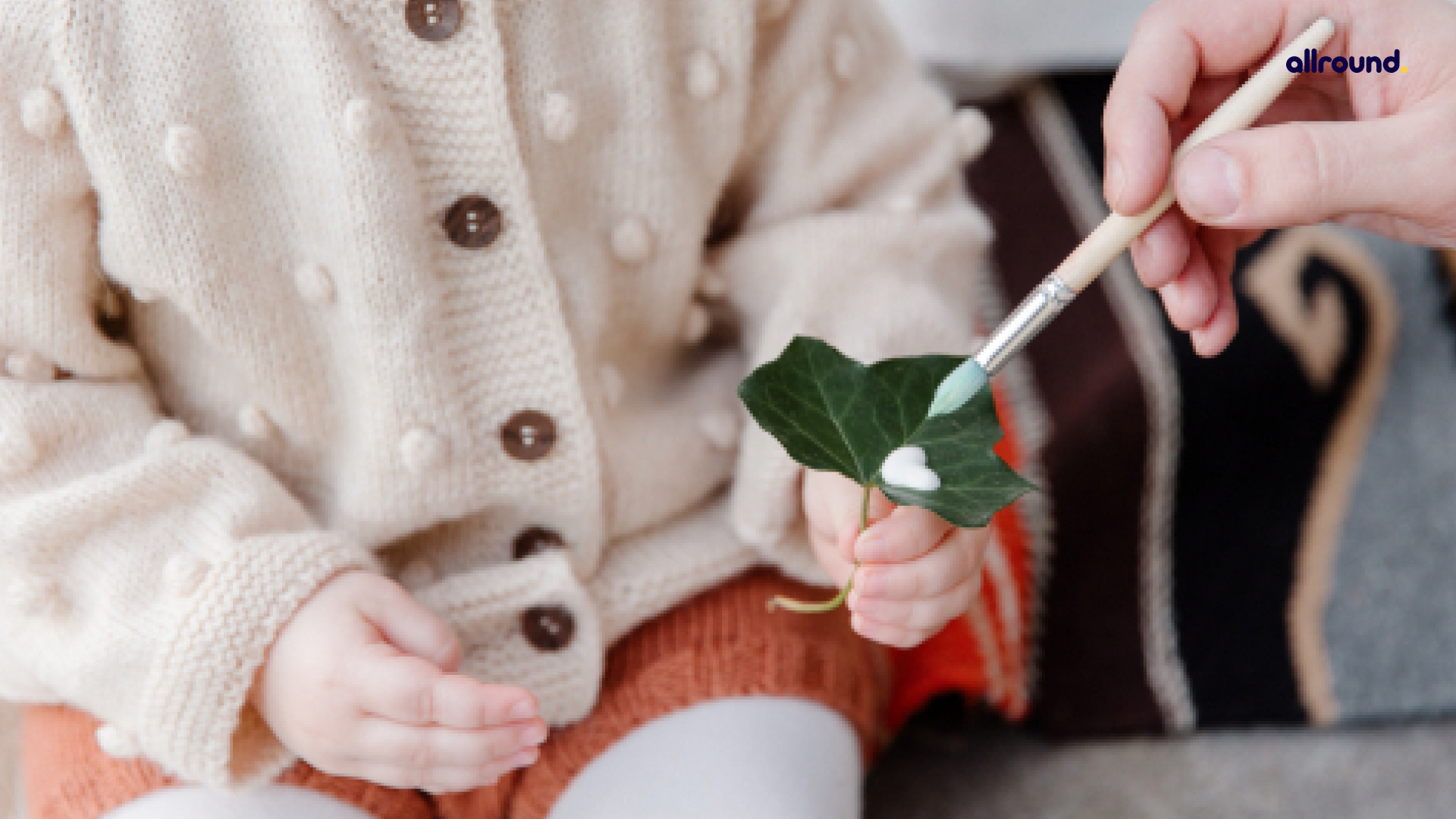Nature Printmaking for Kids6 min read
Kids are nature lovers. They are excited about everything around them, especially about nature. So trying some super fun nature activities with your kids will be amazing.
Contents
Nature and its colors
Nature is a treasure box where you can find art of many kinds. All of the pigments, colors, and inks used in our paints come from nature. It is the source of inspiration for great artworks of the world. You can make beautiful paper crafts and other artwork by printing flowers, leaves, fruits, etc from nature on various objects. You can help your kids to start with flat leaves, such as the sage, maple, and dandelion trying to print them on paper. You try printing with different papers to find the one that works best for you and your kid.
What is nature printing?
Nature printing is an art form that uses plants, animals, and other natural subjects to create stunning images. The subject goes through various stages to create a direct impression on various materials, such as photographic plates and lead. In 1737, Benjamin Franklin printed money bills using leaf casts. Others also report that he used a copper plate press.
Joseph Brintnall, a naturalist from Philadelphia, and Franklin’s friend sent nature prints from the leaves of their local forests. So isn’t that amazing?
Let’s try some cool Nature Printing for your Kids.
Making Prints on Plain Cloth
Material:
- Variety of leaves and flowers
- Clear Adhesive Tape
- Scissors
- A big Pebble or Rubber Mallet Hammer
- Plain canvas cloth
- A magazine
- Help your child to place the canvas on the magazine.
- Use the scissors and trim any excess or bulging plant parts for your child.
- Ask your child to arrange the leaves and flowers as desired.
- Show your child to use the adhesive tape to secure the flowers and leaves with adhesive tape.
- Together pound firmly with the pebble or the rubber mallet hammer on the adhesive tape so that the leaves and flowers are pressed.
- Leave it for one hour.
- Slowly remove the adhesive tape and find your naturally printed design on the cloth.
Making leaf prints on paper:
Material:
- Leaves
- Acrylic Paints—I used three shades of green, but use whatever you like
- Soft Paintbrush
- Palette
- Small Bottle
- Waxed Paper
- Drawing Paper
- Help your child find leaves of different shapes from your garden.
- Now ask for your child’s favorite color or any shades of green and squeeze it onto the palette.
- Help your child with using the paintbrush and paint the veined side of the leaf.
- Carefully place the leaf with its painted side facing the paper.
- Cover it with waxed paper.
- Ask your child now to roll the small bottle over the waxed paper.
- Now gently remove the waxed paper and the leaf to see beautiful leaf Prints.
- Do the same with other leaves too.
- You can make a beautiful canvas of Leave Prints with your child.
Make Flower Prints on paper
Materials:
- Flowers
- Acrylic Paints
- Soft Paintbrush
- Palette
- Small Bottle
- Waxed Paper
- Drawing Paper
- Help your child find flowers of different kinds from your garden.
- Get the materials ready.
- Choose a color that is your child’s favorite and squeeze it on the palette.
- You can paint it using the paintbrush in two ways, either the petals or a side of the flower.
- Now help your child place the flower with the painted side on the paper.
- Cover it with waxed paper.
- Now roll the small bottle over the waxed paper.
- Gently remove the waxed paper and the flower to see prints on the paper.
- You can repeat the same process with the rest of the flowers too.
- You can make handmade cards and write messages to dear ones.
Make Fruit Prints on paper
Materials:
- Fruits of random plants, or dried seeds, or seed pods you find in your garden.
- Acrylic Paints
- Soft Paintbrush
- Palette
- Drawing Paper
- Find fruits of random flowering plants or even trees. You can find plenty around you. Guide your child to choose the seeds or seed pods or even fruits.
- Choose a color that is your child’s favorite and squeeze it on the palette.
- You can paint it using a paintbrush.
- Now help your child make prints using the fruit or the seed.
- You can either stamp the painted fruit or seed on the paper or roll it if the structure of it allows.
- So you can make different unique patterns with different materials you found in nature.
- You can repeat the same process with the rest of the fruits and seeds too.
Make Prints with some vegetables
Materials:
- Potato, Lady’s Finger, Onion and Tomatoes
- Knife to cut.
- Acrylic Paints
- Soft Paintbrush
- Palette
- Drawing Paper
- Printing with vegetables is super fun.
- Parents can help children to cut the vegetables.
- Choose a color that is your child’s favorite and squeeze it on the palette.
- You can paint it using a paintbrush.
- Now help your child make prints using the cut Vegetables.
- Lady’s finger and tomatoes can give you amazing patterns, cut onions can give lots of circles, and potato printing is cool.
- You can either stamp the painted Vegetable on the paper or roll it if the structure allows it.
- So you can make different unique patterns with different vegetables which belong to nature as well.
- You can repeat the same process with any vegetable you like.
Benefits of Printmaking
Printmaking is a fun activity. But it has hidden benefits. They help the development of a child’s skills in many ways.
Improves Bilateral Coordination
Bilateral coordination is a process that allows children to coordinate both their bodies’ sides using their brains. This ability is a good indicator of their cognitive progress. Creative activities help improve coordination by simultaneously stimulating different parts of the brain.
Aids Cognitive development
Performing arts, such as dancing and drawing, require a child’s focus and perseverance to develop. They are also important for a child’s cognitive development.
Boosts Visual Hearing
When children can draw objects that are correlated with their own words, they can understand the concepts of distance and size much better. Arts and crafts help students develop their critical thinking and creativity, which is very important for them to learn. Developing a basic visual processing and spatial relations skill can help improve a person’s ability to perform simple tasks.
Conclusion
Pursuing arts and crafts allows children to develop critical thinking and creativity skills, which are extremely important for their overall development. It is also beneficial for them to learn how to collaborate and communicate effectively. Hence engage your children in such activities. Hope this article helped you with great ideas to help your child’s holistic development creatively.





